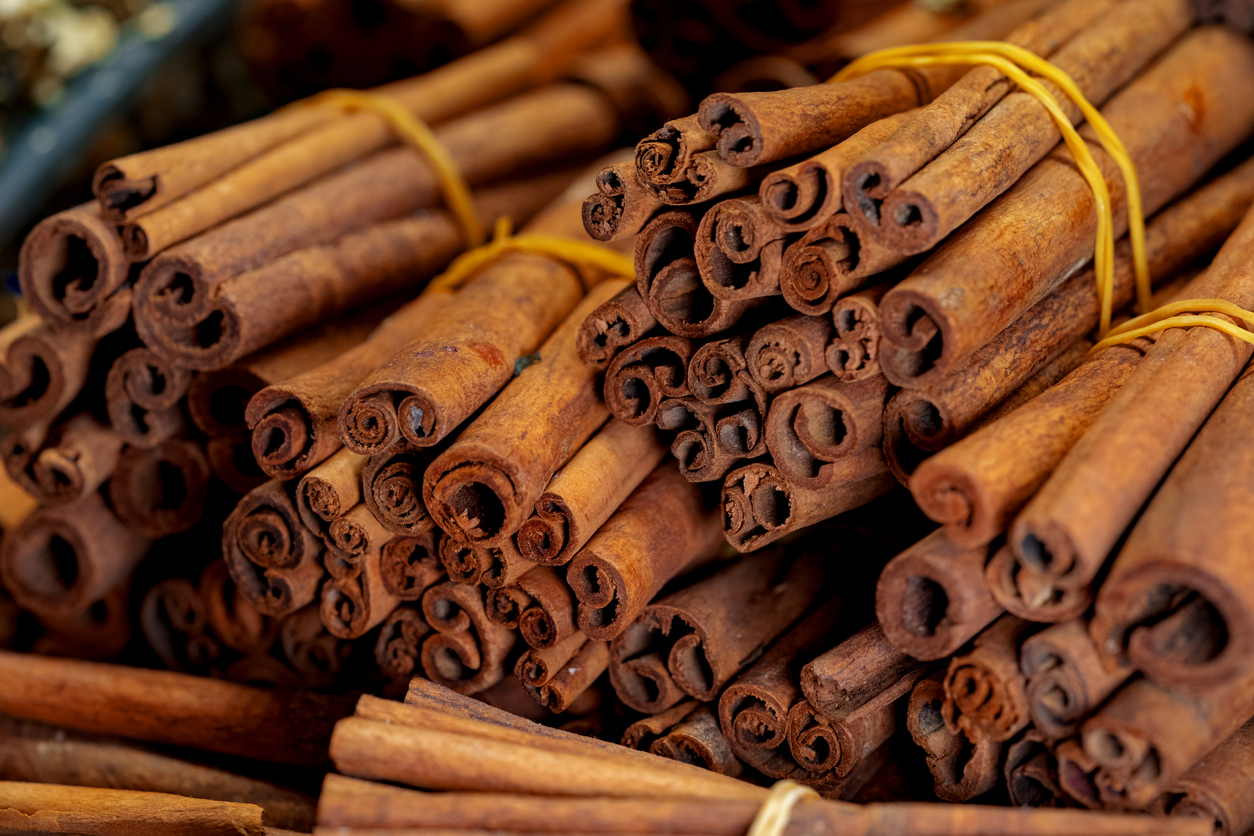The Economic Impact of Cinnamon Production by Country: Key Players Revealed
The Economic Impact of Cinnamon Production by Country: Key Players Revealed
Are you curious about the economic powerhouse behind everyone’s favorite spice, cinnamon? Look no further! In this blog post, we will unravel the fascinating world of cinnamon production and its impact on various countries. Prepare to be amazed as we reveal the key players that are driving this fragrant industry forward. From traditional giants to surprising newcomers, join us on a journey through economic growth and savory scents in “The Economic Impact of Cinnamon Production by Country: Key Players Revealed.”
Introduction to Cinnamon Production
Introduction to Cinnamon Production
Cinnamon is a popular spice that has been used for centuries for its distinctive flavor and aroma. It is derived from the bark of trees belonging to the genus Cinnamomum, which are native to Southeast Asia and parts of South America. The spice is commonly used in cooking and baking, as well as in traditional medicine due to its numerous health benefits.
Cinnamon production involves harvesting the inner bark of cinnamon trees and processing it into various forms such as sticks, powder, or oil. This process requires specific environmental conditions and skilled labor, making it an important economic activity in many countries.
Key Players in Cinnamon Production
The top producers of cinnamon are located mainly in Asia and Latin America. According to recent statistics from the Food and Agriculture Organization (FAO), Indonesia is the largest producer of cinnamon, followed by China, Vietnam, Sri Lanka, Myanmar, India, Madagascar, Brazil, Peru, and Guatemala.
Indonesia produces around 40% of the world’s supply of cinnamon. The country’s tropical climate provides ideal conditions for growing high-quality cassia cinnamon (the most common type of cinnamon) with a strong aroma and flavor. The Indonesian government has also implemented policies to support the development of the spice industry through research programs and export incentives.
Overview of Top Cinnamon Producing Countries
Cinnamon is a highly valued and widely used spice, with its distinct aroma and flavor making it a popular ingredient in food, beverages, and even cosmetics and fragrances. It is derived from the inner bark of trees in the genus Cinnamomum, which are primarily grown in tropical regions around the world.
There are several countries that dominate the global production of cinnamon, each with their own unique varieties and methods of cultivation. In this section, we will take a closer look at some of the top cinnamon producing countries and their contribution to the global market.
1. Indonesia
Indonesia is currently the largest producer of cinnamon in the world, accounting for approximately 40% of global production. The country’s climate and fertile soil make it an ideal location for cultivating different types of cinnamon trees such as Cassia and Korintje. The majority of Indonesian cinnamon is harvested from wild-grown trees in Sumatra and Java, with small-scale farmers also playing a significant role in production.
2. China
China is another major player in the global cinnamon market, producing over 30% of the world’s supply. Most Chinese cinnamon comes from two varieties – Cinnamomum cassia (Chinese cassia) and Cinnamomum loureiroi (Saigon cinnamon). These varieties have a stronger flavor compared to other types of cinnamon, making them popular choices for cooking and baking.
Economic Impact of Cinnamon Production:
Cinnamon production has a significant economic impact on many countries around the world. This spice has been used for centuries in various cuisines and traditional medicines, making it a highly sought-after commodity in global markets. In this section, we will delve into the economic impact of cinnamon production by country and highlight key players in the industry.
1. Major Producers of Cinnamon:
The top producers of cinnamon globally are Indonesia, China, Vietnam, Sri Lanka, and India. These five countries account for more than 90% of the world’s total cinnamon production. Indonesia is the largest producer with an estimated annual output of 55,000 metric tons, followed by China with 30,000 metric tons.
Sri Lanka is known for its high-quality variety of cinnamon called “Ceylon Cinnamon,” which is considered to be one of the most superior types in terms of flavor and aroma. The country produces approximately 20,000 metric tons of cinnamon annually.
2. Contribution to National Economy:
The production and exportation of cinnamon play a crucial role in the national economy of these countries. For instance, in Sri Lanka alone, the cinnamon industry contributes to almost 0.5% of the country’s GDP and provides employment opportunities to over 350,000 people.
Similarly, Indonesia’s economy heavily relies on its agricultural sectors such as spices like cinnamon; it contributes to around USD 200 million annually through exports.
– GDP Contribution
The Gross Domestic Product (GDP) is a key measure of a country’s economic health and represents the total value of all goods and services produced within its borders in a given period. In this section, we will explore the GDP contribution of key players in cinnamon production by country and how it impacts their economies.
Sri Lanka, being the largest producer and exporter of cinnamon, has a significant GDP contribution from this industry. The country’s GDP has been steadily increasing over the years, with agriculture being one of the main contributors. Cinnamon is a major agricultural export for Sri Lanka, accounting for approximately 0.1% of its total GDP. This may seem like a small percentage, but considering that Sri Lanka’s economy heavily relies on agriculture and exports, cinnamon production plays an important role in sustaining its economic growth.
Another top player in cinnamon production is Indonesia. The country’s GDP has also been on an upward trend in recent years, with agriculture being a significant contributor to its economy. Cinnamon is one of Indonesia’s top agricultural exports, contributing around 0.2% to its total GDP. This may not seem like much at first glance, but when taking into account other industries such as tourism and manufacturing that also heavily rely on agriculture for raw materials, the overall impact becomes more apparent.
– Employment Opportunities
Employment opportunities are a crucial aspect of any industry, and the cinnamon production sector is no exception. Countries that are major players in the global cinnamon market also provide significant employment opportunities for their citizens through this industry. In this section, we will delve deeper into the employment landscape of these countries and explore how cinnamon production has impacted their economies.
Sri Lanka, Indonesia, Vietnam, China, and Madagascar are some of the key players in the global cinnamon market. These countries not only have favorable climatic conditions for growing high-quality cinnamon but also have well-established production processes that generate employment at various levels.
Firstly, let’s take a look at Sri Lanka, which is known as one of the largest exporters of true Ceylon cinnamon. The country’s economy heavily relies on agriculture, with around 1/3rd of its workforce employed in this sector. Among them, a significant portion works in the cultivation and processing of spices such as cinnamon. It is estimated that over 200,000 people are directly employed in Sri Lanka’s cinnamon industry alone. Additionally, many small-scale farmers rely on cinnamon cultivation as a means to supplement their income during off-seasons for other crops.
Similarly, Indonesia ranks second after Sri Lanka in terms of global cinnamon production and exports. This Southeast Asian country also provides ample employment opportunities through its spice industry. According to data from Statistics Indonesia (BPS), over 1 million Indonesians work in spice plantations and processing plants across different regions of the country.
– Trade and Exports
Trade and exports play a crucial role in the economic impact of cinnamon production by country. Cinnamon is one of the most widely traded spices in the world, with its demand steadily increasing due to its versatile use in various industries such as food, cosmetics, and pharmaceuticals. In this section, we will delve into how trade and exports affect the global cinnamon market and which countries are leading players in this industry.
One of the key factors driving the growth of cinnamon trade and exports is its rising popularity as a superfood. Cinnamon has been known for its medicinal properties for centuries, but recent research has revealed that it also contains powerful antioxidants and anti-inflammatory compounds. As consumers become more health-conscious, there has been an increased demand for natural remedies like cinnamon, thus driving up its international trade.
When it comes to global cinnamon trade, China dominates as both a producer and an exporter. According to data from the United Nations Food and Agriculture Organization (FAO), China produces over 70% of the world’s total supply of cinnamon. Vietnam is another significant player in cinnamon production, accounting for about 20% of global output. Other top producers include Indonesia, Sri Lanka, and Madagascar.
Key Players in the Global Cinnamon Industry:
The global cinnamon industry is a major contributor to the economies of many countries, with its production and export generating significant revenue. In this section, we will take a closer look at some of the key players in the global cinnamon industry and their contributions to the overall production and trade of this highly sought-after spice.
1. China: China is the largest producer and exporter of cinnamon in the world, accounting for over 80% of the total global production. The country’s vast land area, favorable climate, and advanced farming techniques have made it an ideal location for growing high-quality cassia cinnamon. Some of the top regions in China known for their cinnamon production include Guangxi, Yunnan, and Guizhou provinces.
2. Indonesia: Indonesia is another major player in the global cinnamon industry, producing around 13% of the world’s total output. The country’s rich volcanic soil and tropical climate provide optimal conditions for cultivating both cassia and Ceylon varieties of cinnamon. Its main exporting ports are Jakarta, Surabaya, Medan, Semarang, and Makassar.
3. Vietnam: Vietnam is one of the fastest-growing producers and exporters of cinnamon globally. The country specializes in producing high-quality cassia variety that is widely used in food processing industries due to its strong flavor profile. It accounts for about 6% of the world’s total output, with most exports going to markets such as India, South Korea, Sri Lanka,and Japan.
– Major Exporters and Importers
Cinnamon, one of the oldest and most popular spices in the world, has been a key player in global trade for centuries. Today, it is still a highly sought-after commodity with an estimated annual value of over $1 billion. In this section, we will take a closer look at the major exporters and importers of cinnamon and their contribution to the economic impact of its production.
Major Exporters:
1. Sri Lanka: Known as the “Island of Spices,” Sri Lanka is the world’s largest exporter of true cinnamon, also known as Ceylon cinnamon. It accounts for over 90% of the global supply and generates significant revenue for the country’s economy. The ideal climatic conditions in Sri Lanka make it the perfect place for growing high-quality cinnamon, which is why it has become synonymous with this spice.
2. Indonesia: With its rich volcanic soil and favorable climate, Indonesia is another leading producer and exporter of cinnamon. While Sri Lanka produces primarily Ceylon cinnamon, Indonesia specializes in Cassia cinnamon, which has a stronger flavor and is more commonly used in cooking and baking.
3. China: China has been producing and exporting cinnamon for centuries, making it one of the oldest players in this market. The country mainly produces Cassia cinnamon but also exports small quantities of other varieties such as Saigon (Vietnam) and Korintje (Indonesia) cassia.
– Leading Companies in the Market
When it comes to the global cinnamon market, there are several key players that dominate the industry and have a significant impact on its economic growth. These companies are responsible for the majority of cinnamon production and trade, making them crucial players in this lucrative market.
1. Ceylon Spice Company: Established in Sri Lanka in 1974, Ceylon Spice Company is one of the largest producers and exporters of cinnamon globally. They specialize in high-quality Ceylon cinnamon, which is considered to be the most sought-after variety due to its distinctive flavor and aroma. The company has a strong presence in both domestic and international markets, exporting their products to over 40 countries worldwide.
2. Adam Group: Founded in Vietnam in 2003, Adam Group is a leading producer and exporter of Vietnamese cassia (also known as Saigon cinnamon). With over 15 years of experience in the spice industry, they have established themselves as a reliable supplier of high-quality cassia at competitive prices. The company has expanded its operations to include other spices such as black pepper and star anise but remains a major player in the Vietnamese cassia market.
3. Elite Spice Inc.: Based in California, USA, Elite Spice Inc. is one of the largest importers and processors of spices globally. They have been operating since 1967 and have built a reputation for providing premium quality spices at competitive prices.
Factors Affecting Cinnamon Production:
Cinnamon production is a major industry in many countries and it has a significant economic impact. The production of cinnamon involves various factors that can affect the outcome and profitability of this trade. In this section, we will explore the key factors that influence cinnamon production in different countries.
1. Climate and Soil Conditions:
The growth of cinnamon trees is heavily influenced by climate and soil conditions. Cinnamon trees require a tropical climate with high humidity, rainfall, and well-drained fertile soil for optimal growth. Countries located near the equator such as Sri Lanka, Indonesia, Vietnam, and Madagascar have ideal climatic conditions for cinnamon cultivation which makes them major producers of this spice.
2. Availability of Land:
The availability of land is another crucial factor affecting cinnamon production. As cinnamon trees require large areas to grow and thrive, countries with vast agricultural land are at an advantage for producing cinnamon on a large scale. For instance, Sri Lanka is known as the world’s largest exporter of true or Ceylon cinnamon due to its abundant land resources.
3. Agricultural Practices:
The use of modern agricultural practices such as irrigation systems, crop rotation techniques, fertilizers, and pest control measures can significantly enhance the productivity and quality of cinnamon crops. These practices also help in reducing losses caused by diseases or pests which can negatively impact the overall yield.
– Climate and Geography
Climate and geography play a crucial role in the production of cinnamon, as it requires specific environmental conditions to thrive. Cinnamon is primarily grown in tropical regions with a combination of warm temperatures, high humidity, and abundant rainfall.
Sri Lanka, also known as the “Island of Spices,” has been the world’s largest producer and exporter of cinnamon for centuries due to its optimal climatic conditions. The country’s climate is characterized by two monsoon seasons that provide ample rainfall throughout the year, creating an ideal environment for cinnamon cultivation. The southwestern monsoon from May to September brings heavy rains while the northeastern monsoon from October to February provides light showers, ensuring a continuous supply of water for the trees.
Indonesia is another major player in the global cinnamon market, accounting for approximately 25% of global production. The country’s climate is similar to Sri Lanka, consisting of two distinct wet and dry seasons. However, Indonesia experiences more extended periods of drought compared to Sri Lanka, which can affect cinnamon production if not managed properly.
India is also a significant producer and consumer of cinnamon due to its favorable tropical climate with high humidity levels and well-distributed rainfall. Most cinnamon plantations are located in southern India’s coastal areas where the temperature remains consistently warm throughout the year.
In contrast, China has cooler temperatures compared to other top producing countries but still manages to be one of the largest exporters of cassia or Chinese cinnamon.
– Government Policies and Regulations
Government policies and regulations play a crucial role in the economic impact of cinnamon production by country. Cinnamon, being a highly sought-after spice, is subject to various government policies and regulations that can significantly affect its production, trade, and overall market dynamics.
One of the key factors that influence the economic impact of cinnamon production is government support for agriculture and spice industries. Many countries have implemented policies and programs aimed at promoting sustainable cinnamon cultivation practices, increasing productivity, and improving the quality of cinnamon produced. These efforts not only benefit producers but also contribute to the growth of national economies.
In addition to providing support to the industry, governments also regulate cinnamon production through various laws and regulations. This includes setting standards for quality control, establishing guidelines for processing and packaging, and implementing measures to ensure food safety. These regulations are essential in maintaining consumer confidence in the product and facilitating international trade.
Moreover, some governments may impose export or import restrictions on cinnamon products as part of their trade policies. For example, certain countries may impose higher tariffs or ban imports from specific regions due to concerns about pests or diseases that could harm their domestic crops.
Another significant factor affecting the economic impact of cinnamon production is labor laws and regulations. As most cinnamon-producing countries rely heavily on manual labor for harvesting and processing, it is crucial for governments to establish fair working conditions that protect workers’ rights while still allowing producers to remain competitive in global markets.
– Technological Advancements
Technological advancements have played a significant role in the production of cinnamon, leading to improved efficiency and increased economic impact. From traditional harvesting and processing methods to modern techniques, technology has revolutionized the cinnamon industry.
One major technological advancement in cinnamon production is the use of mechanized equipment for harvesting. In the past, cinnamon was harvested manually by skilled laborers using hand tools such as sickles and machetes. This process was not only time-consuming but also physically demanding, resulting in low productivity. However, with the introduction of specialized machinery such as tree shakers and mechanical pruners, the harvesting process has become faster and more efficient.
Another area where technology has made a remarkable impact is in cinnamon processing. Traditionally, cinnamon sticks were processed manually through a series of labor-intensive steps that involved peeling off the bark, drying it under the sun, and then cutting it into small pieces. Today, advanced machines have replaced these manual processes, resulting in higher yields and better quality products. The use of automated machines has also reduced human error and contamination risks.
In recent years, there has been a growing trend towards incorporating digital technologies in cinnamon production. For instance, farmers can now use smartphone apps to monitor weather conditions and soil moisture levels which helps them determine optimal harvest times. Such information allows for better planning and management of resources leading to improved crop quality and quantity.








Comments are closed.